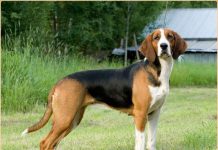About Dhole - Asiatic Wild Dog or An Endangered Dog
The dhole was first observed by an explorer, Pesteref. He declared dhole as a pack hunter and having similarities of a golden jackal. The scientific name of dhole is Cuon alpinus given by Peter Pallas in 1811. The dhole is found in Central, South, and Southeast Asia. Historically, the native place of dholes is Bangladesh, Bhutan, Cambodia, China, Vietnam, Indonesia, India, Myanmar, Nepal, and Thailand. These are not found in desert areas.
The common names of dhole include Asiatic wild dog, Red Dog, Whistling dog, mountain wolf, Indian wild dog, Chien sauvage d’ Asie (in French) and Perro Salvaje Asiatico (in Spanish).
Why It Is listed As An Endangered Dog?
The International Union for Conservation of Nature (IUCN) has listed the Dhole as an endangered species due to a noted decline in its population based on research.
Factors that declared dhole as endangered dog
- Loss of prey
- Habitat loss and increase in competition with other species
- Disease transfer from dholes and consumption of livestock
Dhole’s Habitat and Diet
The Dhole habitat is in a wide variety of vegetation types. These are found in dense forests, steppes, and alpine places, scrub, Western and Eastern Ghats in Northeast India. These are also found in Chitwan National Park and Kanchenjunga Conservation Area.
The researchers analysed the diet of dholes during their surveys. Dholes are carnivorous animals and they hunt in morning hours and at night in the presence of moonlight. Country wise diet choice of Dhole is given below.
[table id=1 /]
Behaviour
As mentioned earlier, the dholes hunt in the morning hours and at night under moonlit. Dholes are not fast as jackals and foxes in hunting. They chase their pray for many hours and then eat. They chase only 500m and they run at a pace of 30mph to grab a prey. Group of dholes hunt together, if they found an animal one will catch its nose and remaining will pull other parts of the victim’s body.
They usually eat heart, liver, lungs, and intestines of targeted animals and leave stomach and rumen parts. They let puppies to eat first when they kill prey.
Lifestyle and Lifecycle
The lifestyle of dholes is social in nature. They live in a pack of 5-12 dholes in each group. They greet at one another by wagging their tails. They work together to feed and care for itself. They live in burrows with different entrances. They share, hunt their prey together by forming large pack of 30 animals and again subdivided into smaller packs.
These dholes have four kinds of dens.
- Simple earth dens (only one entrance)
- Complex earth dens (more than one entrance)
- Simple Cavernous dens (between rocks)
- Interconnected dens ( located under dense scrub or banks of rivers)
They use high-pitched screams to find enough prey to eat. It uses their sense of smell to grab prey. They also chase prey into water to slow down prey movement and it makes them easy to eat.
Dominant dholes are allowed to breed and rest of all the dholes are engaged in taking care of nursing mother and pups.
Dhole Predators
- Bengal Tigers
- Leopards
- Pythons
- Saltwater crocodiles
- Mugger crocodiles
- Humans
Breeding and Lifespan
Usually Dhole breeds in the months of November and December, but dholes in Moscow Zoo breed in the month of February. The male spends two weeks courting the female and two weeks to mate with female Dhole. The gestation period goes around 60 -63 days and give birth to 5 to 12 pups. At 1 year, a pup will be grown fully and sexually mature about three years old.
Read more on African Wild Dog
Appearance
The Dholes look like a golden jackal. The dholes are very large and ferocious in appearance. The detailed appearance of Dholes is tabulated below.
[table id=2 /]
Lifespan
The longevity of dholes ranges between 10 to 12 years of age.
Threats and Health Issues
- Habitat loss, transformation, depletion of prey are major threats to dholes
- Ill-treatment with dholes due to livestock predation and resulting in local extinction
- Dholes suffer from rabies, canine distemper, roundworms and cestodes which are usually affected from infectious pathogens.
Dhole Characteristics And Facts
- Dholes are red furred from Siberia to India.
- They live in a pack of about 5-12 animals, sometimes up to 30.
- They hunt in packs and share their prey.
- Dholes are good at running, swimming, and jumping. These skills are used to chase a prey.
- These Asiatic wild dogs can jump over 7 feet straight up into the air.
- Female dholes have six or seven pairs of teats.
Dhole Interesting Facts
- Dholes are good at making sounds like whistle, scream, mew, and cluck like a chicken. With these special sounds they can identify individual animals or communicate with each other.
- Unlike other dogs (42 teeth), dholes have only 40 teeth.
- Dholes are monogamous and there will be only one dominant dhole pair in the pack, the remaining will contribute in care and feeding of pups.
- These red dogs can survive for 10 years in the wild and 16 years in the zoo.
- Female dholes can give birth to 5-12 pups at a time. The pups, when fully grown, start hunting with adult dholes.
- It runs at a speed of 72.4 kilo meter per hour.
- Today, the dhole’s population is in extinction across their native territories. Due to habitat loss and human hunters.
“The greatness of a nation and its moral progress can be judged by the way its animals are treated,”—Mahatma Gandhi
Save Animals and Form an Incredible Nation!!!






